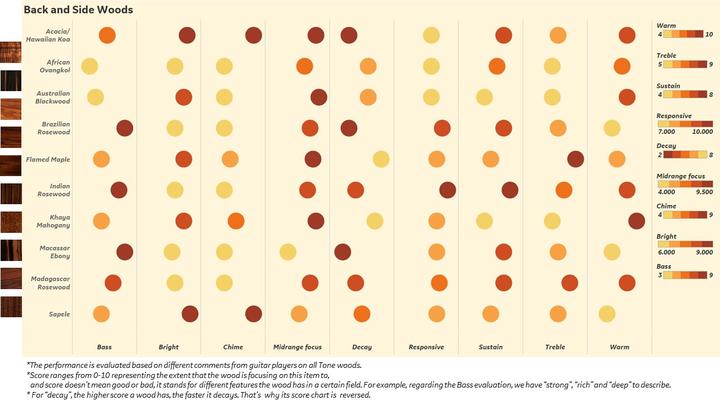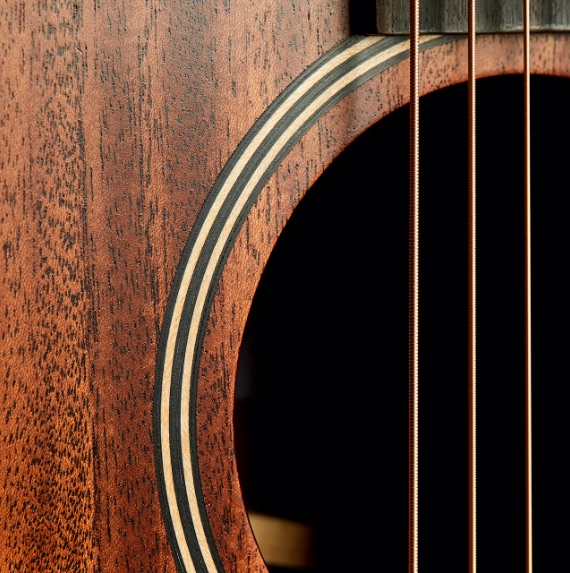You are using an out of date browser. It may not display this or other websites correctly.
You should upgrade or use an alternative browser.
You should upgrade or use an alternative browser.
"Unplugged Natural Compression"...
- Thread starter Wedge
- Start date
Johnny Bom Bonny
New member
- Joined
- Feb 26, 2020
- Messages
- 16
This is not to stir up trouble, and I do not condone any nastiness on the part of the customer in question, who may or may not know what he is talking about, but my personal observation is that some Les Paul guitars sound more dynamic than others. This is usually related to the initial attack of the note, and its decay. Others on this forum have made similar observations in the past, regarding "compressed" sound, relating to the acoustical quality of the instrument:
Guitar makers sometimes mention compression in relation to the woods used in the construction of a guitar:
"Khaya Mahogany is a hard, bright sounding wood with a tendency to accentuate the mid-range. With its large dynamic range, it responds very well to players with a strong attack who like dry, earthy, low-fi sounds; natural compression creates a volume ceiling that smoothes out loose righthand technique. The clean and direct tonal character makes it a great option for playing with other instruments."

 zhuanlan.zhihu.com
zhuanlan.zhihu.com
"Sometimes we use hardwoods such as mahogany or koa as guitar tops. These denser materials require more energy to set in motion, and the vibration tends to move more gradually through them. The result is a kind of natural compression effect that rounds out the guitar’s initial attack, producing a focused voice with fewer overtones."

 woodandsteel.taylorguitars.com
woodandsteel.taylorguitars.com
Weight = Bigger sound?
In my experience, I'm finding the heavier the guitar, the bigger/beefier the sound. Not always a good thing, there is a happy medium. Anyone else found this to be true?
www.lespaulforum.com
Guitar makers sometimes mention compression in relation to the woods used in the construction of a guitar:
"Khaya Mahogany is a hard, bright sounding wood with a tendency to accentuate the mid-range. With its large dynamic range, it responds very well to players with a strong attack who like dry, earthy, low-fi sounds; natural compression creates a volume ceiling that smoothes out loose righthand technique. The clean and direct tonal character makes it a great option for playing with other instruments."

Tone Woods of Guitar
Tone woods Wang Zaixing, wzx88210046@gmail.comErvin Somogyi, a master luthier who apparently knows a lot about wood acoustics and wood physics, said about the Tone wood: “Tone woods by definition m…
"Sometimes we use hardwoods such as mahogany or koa as guitar tops. These denser materials require more energy to set in motion, and the vibration tends to move more gradually through them. The result is a kind of natural compression effect that rounds out the guitar’s initial attack, producing a focused voice with fewer overtones."

Taylor Tonewoods | Wood & Steel
For tops, we frequently use softwoods, such as spruce or cedar, which come from coniferous trees. They tend to have a winning combination of being lightweight yet stiff and strong, possessing an elastic quality that allows them to be set in motion easily. And that’s an important part of their...
You know that does make sense. Its true that all woods have different, even stronger tones. My 54 Esquire sounds different that my 59 Strat, same Ash body and maple necks. One day I swapped necks to see if it changed the tone of the guitar, and it did. A vintage reissue Paul definitely sounds different from a chambered Paul. That said I am going to stop dissing the guy. I was being an asshole, and retaliating because he wasted my time. I am not acting my age, and kind of embarrassed now. So... I'm done! And if this post disappears, it will not be because of any of your responses, you all have been kind. I just feel like its time to give it up, and now its time to just play that guitar... loudly.This is not to stir up trouble, and I do not condone any nastiness on the part of the customer in question, who may or may not know what he is talking about, but my personal observation is that some Les Paul guitars sound more dynamic than others. This is usually related to the initial attack of the note, and its decay. Others on this forum have made similar observations in the past, regarding "compressed" sound, relating to the acoustical quality of the instrument:
Weight = Bigger sound?
In my experience, I'm finding the heavier the guitar, the bigger/beefier the sound. Not always a good thing, there is a happy medium. Anyone else found this to be true?www.lespaulforum.com
Guitar makers sometimes mention compression in relation to the woods used in the construction of a guitar:
"Khaya Mahogany is a hard, bright sounding wood with a tendency to accentuate the mid-range. With its large dynamic range, it responds very well to players with a strong attack who like dry, earthy, low-fi sounds; natural compression creates a volume ceiling that smoothes out loose righthand technique. The clean and direct tonal character makes it a great option for playing with other instruments."

Tone Woods of Guitar
Tone woods Wang Zaixing, wzx88210046@gmail.comErvin Somogyi, a master luthier who apparently knows a lot about wood acoustics and wood physics, said about the Tone wood: “Tone woods by definition m…zhuanlan.zhihu.com
"Sometimes we use hardwoods such as mahogany or koa as guitar tops. These denser materials require more energy to set in motion, and the vibration tends to move more gradually through them. The result is a kind of natural compression effect that rounds out the guitar’s initial attack, producing a focused voice with fewer overtones."

Taylor Tonewoods | Wood & Steel
For tops, we frequently use softwoods, such as spruce or cedar, which come from coniferous trees. They tend to have a winning combination of being lightweight yet stiff and strong, possessing an elastic quality that allows them to be set in motion easily. And that’s an important part of their...woodandsteel.taylorguitars.com



